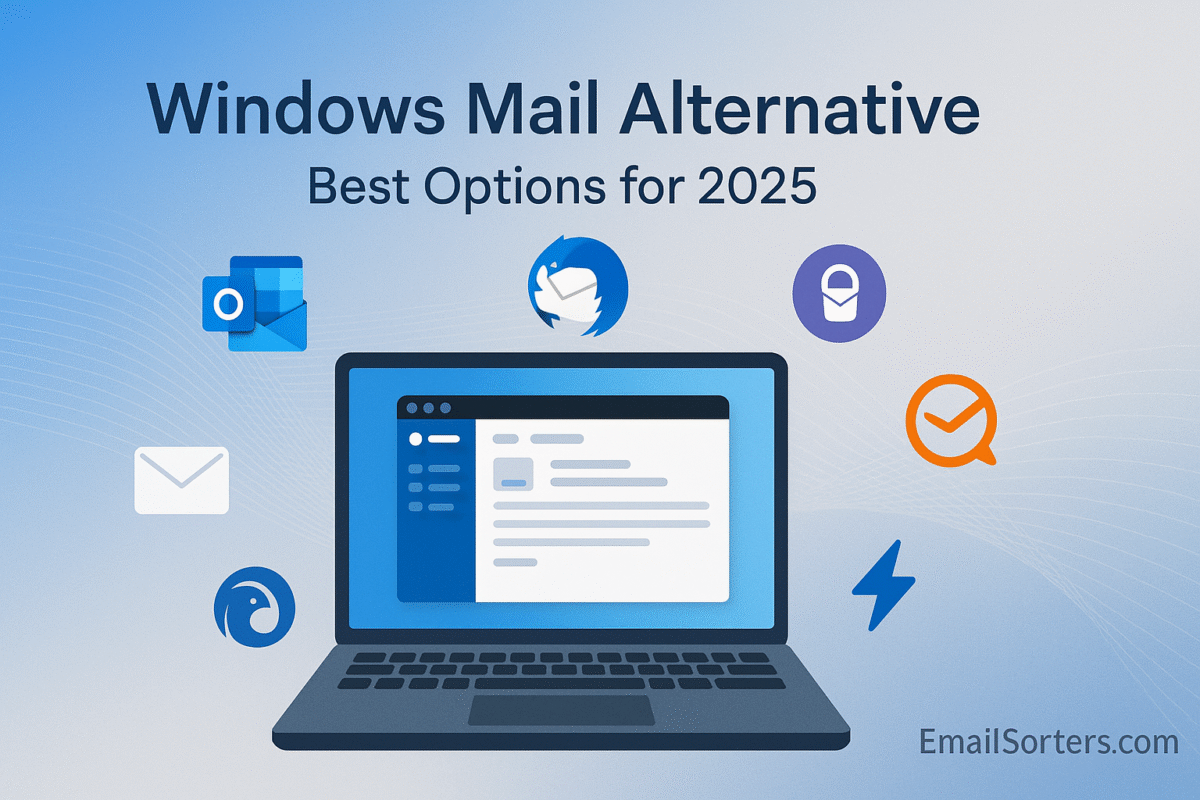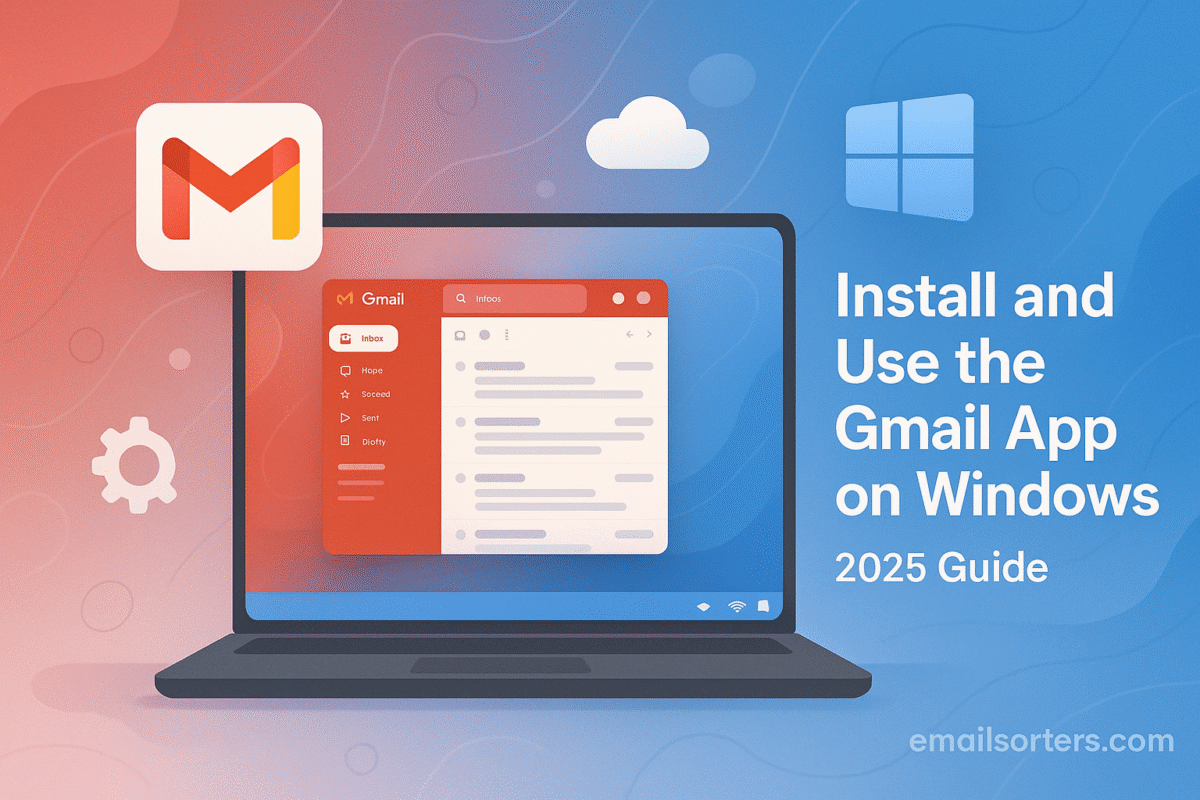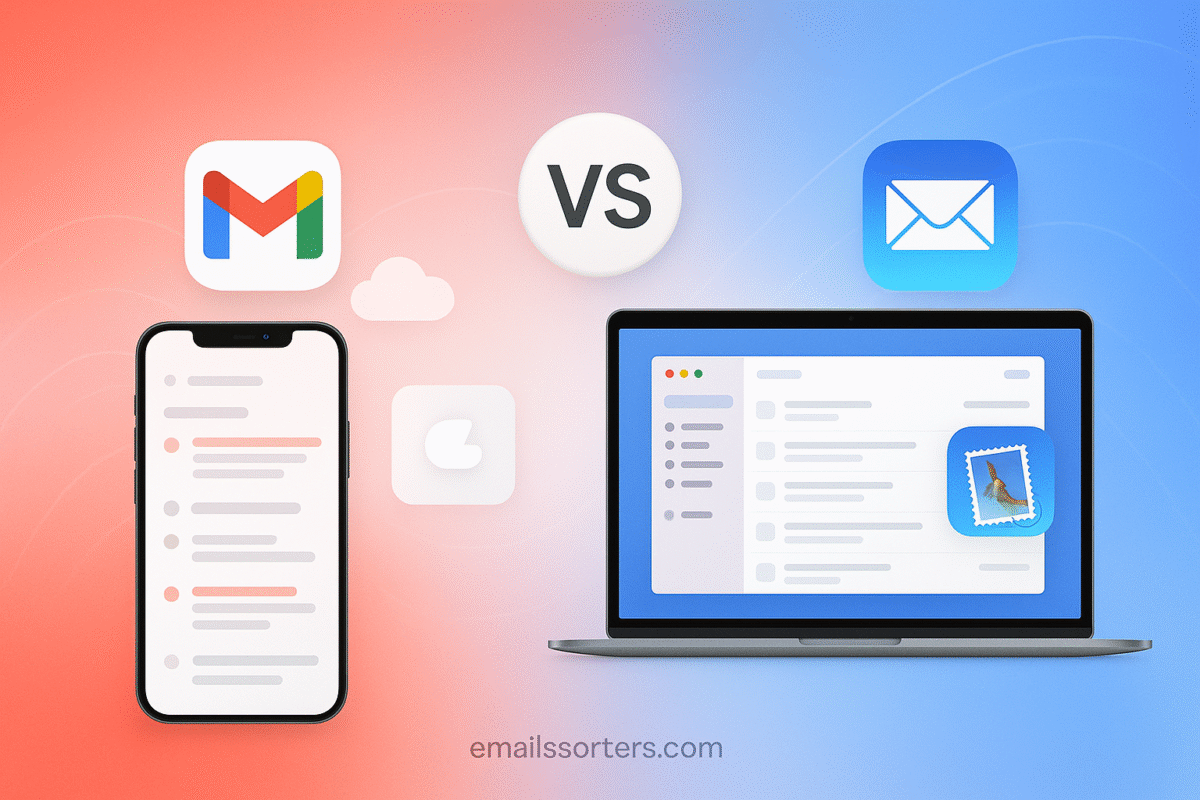Mailbird review: If your inbox feels more like a daily battleground than a productivity tool, you’re not alone. Managing multiple accounts, endless notifications, and scattered apps can drain focus fast. That’s where Mailbird comes in—a sleek, intuitive email client built for Windows users who want to streamline communication and bring all their favorite tools into one place.
Praised for its clean design and smooth performance, Mailbird promises more than just an email app. With a unified inbox, fast search, and integrations for apps like Slack, Google Calendar, WhatsApp, and Dropbox, it aims to be a central hub for productivity. But does it live up to the hype?
In this review, we’ll break down Mailbird’s key features, ease of use, integrations, pricing, and potential drawbacks. Whether you’re a freelancer, remote worker, or small business user, you’ll get a clear picture of what Mailbird offers, and whether it’s the right fit for your workflow.
What is Mailbird?
Mailbird is a Windows-based email client first launched in 2013, designed to give users a more modern, customizable alternative to traditional email apps like Microsoft Outlook and Mozilla Thunderbird. Unlike basic webmail, Mailbird is built to be a centralized hub, combining not only email but also calendars, messaging apps, task managers, and file-sharing services.
The application has grown popular among freelancers, entrepreneurs, and small teams who want to manage multiple accounts without bouncing between different platforms. Its focus on design and usability sets it apart from older clients, while its integration with dozens of productivity apps makes it especially appealing for those who prefer having everything in one place.
Mailbird is available in both free and paid versions, with the Pro plan unlocking more advanced features like email snoozing, unlimited accounts, and priority support. This makes it flexible enough for casual users who just need a simple inbox, as well as professionals who require powerful organizational tools.
User Interface and Experience
One of Mailbird’s biggest selling points is its user interface. Many email clients feel cluttered or outdated, but Mailbird takes a clean, modern approach. The layout is designed to minimize distractions, with a simple navigation panel on the left and a reading pane on the right. Users can easily switch between emails, calendars, and integrated apps without feeling overwhelmed.
Customization is a key part of the experience. You can choose from a range of themes to match your style, adjust the layout to prioritize your inbox or reading pane, and use keyboard shortcuts to speed up navigation. These options make Mailbird feel personal and adaptable rather than one-size-fits-all.
Compared to Outlook, which is often considered bulky due to its corporate-focused design, Mailbird feels lighter and easier to use. Against Thunderbird, which relies heavily on add-ons for customization, Mailbird delivers a polished out-of-the-box experience. Users who value aesthetics and simplicity often find themselves drawn to Mailbird over more utilitarian email apps.
Account and Tool Integrations
Mailbird isn’t just an email client, it’s a productivity hub. The software supports multiple email accounts, whether you’re using Gmail, Outlook, Yahoo, or custom IMAP/POP3 addresses. This means you can manage all your inboxes in one place, a major advantage for professionals juggling personal and work accounts.
But where Mailbird really stands out is in its integration with third-party tools. You can connect apps like Google Calendar, WhatsApp, Slack, Dropbox, Asana, and even Trello, allowing you to manage communication and tasks without leaving the Mailbird interface. For example, you can reply to a WhatsApp message, check a shared Dropbox file, and review your calendar events; all while staying inside the app.
The unified inbox feature ties this together, displaying all your accounts in a single, organized view. Instead of clicking through multiple accounts, you see your emails in one continuous stream while still being able to sort by individual accounts when needed. This integration-focused design saves time and reduces the mental load of constantly switching between apps.
Speed and Reliability
A common frustration with many email clients is sluggish performance, especially when dealing with large inboxes or multiple accounts. Mailbird, however, has built its reputation on being fast and responsive. Emails load quickly, switching between accounts is smooth, and the search function produces results almost instantly.
For users managing tens of thousands of messages, Mailbird continues to perform well without significant slowdowns. The app’s lightweight design plays a big role in this, avoiding the bloated feel that some competitors like Outlook can have after syncing large amounts of data.
Offline access is also supported, which means you can read and draft emails even when you don’t have an internet connection. Once you’re back online, Mailbird syncs your changes automatically. This reliability makes it especially useful for business travelers or remote workers who may not always have stable connectivity.
Features for Productivity
Mailbird offers a suite of productivity tools designed to help users stay on top of their inbox rather than feeling buried by it. One standout feature is the unified inbox, which pulls messages from all your accounts into a single view. This saves time and eliminates the hassle of checking multiple inboxes separately.
Another powerful tool is the snooze feature, which allows you to temporarily remove an email from your inbox and have it reappear at a time you choose. This is particularly useful for messages that require attention later but would otherwise clutter your inbox.
Mailbird also supports email tracking, so you can see when your messages have been opened. For professionals who rely on timely responses; such as sales representatives or project managers; this feature can be a game changer.
Additional productivity perks include advanced search functions, contact management, and customizable keyboard shortcuts. Users can also automate repetitive actions, such as filtering emails from specific senders or auto-archiving newsletters. These features collectively make Mailbird a tool that not only handles email but actively helps you manage it more effectively.
Pricing and Value for Money
Mailbird offers both free and paid versions, making it accessible to a wide range of users. The free version covers basic email management and supports a limited number of accounts. While this may be enough for casual users, professionals often find the Pro version more valuable.
The Pro plan is available through either an annual subscription or a one-time lifetime license. Upgrading unlocks unlimited account support, priority customer service, and advanced features like snooze and email tracking. For many, the one-time lifetime payment is an attractive alternative to recurring subscription models used by competitors.
When compared to Outlook, which is tied into Microsoft 365 subscriptions, or eM Client, which also charges for advanced features, Mailbird’s pricing is competitive. It offers a solid balance between affordability and functionality, making it a good value for professionals, small businesses, and remote workers who want a powerful email client without ongoing costs.
Privacy and Security
With growing concerns about data privacy, Mailbird’s approach to security is an important consideration. Mailbird does not scan your emails for advertising purposes, unlike some web-based services. This helps reassure users who are cautious about their data being monetized.
The app supports secure connections via SSL and TLS, ensuring that your messages are encrypted during transmission. While Mailbird itself does not provide built-in end-to-end encryption like Thunderbird with OpenPGP, it does respect user privacy and works well with providers that support secure email practices.
In addition, Mailbird integrates with trusted providers such as Gmail and Outlook, which means your data benefits from the strong security infrastructures those services already have in place. For most users, this level of security is more than sufficient. However, individuals or organizations requiring advanced encryption may find Thunderbird or ProtonMail better suited to their needs.
Real-World Use Cases
Mailbird is designed with versatility in mind, which makes it a good fit for a wide range of users. Freelancers often find it particularly helpful because of the unified inbox and integration with tools like Slack, Google Calendar, and Trello. Instead of juggling multiple apps while managing different clients, they can handle everything from one dashboard. For example, a freelance writer could track client emails, set deadlines in the calendar, and share drafts through Dropbox; all without leaving Mailbird.
Small business owners also benefit from Mailbird’s integration features. A team leader might connect Mailbird with project management apps like Asana, ensuring that communication and task management stay in sync. The snooze feature becomes especially valuable here, allowing team leaders to schedule follow-up emails at the right time without cluttering their active inbox.
Remote workers are another key audience. Since Mailbird integrates with popular messaging services like WhatsApp and Slack, it allows them to stay connected with their teams while keeping communication organized. Having everything consolidated in one platform reduces the mental load of switching between dozens of tabs and apps, helping remote workers maintain focus throughout the day.
These examples show how Mailbird adapts to different workflows, making it a flexible solution for both individuals and small teams.
Pros and Cons of Mailbird
Pros:
- Sleek, modern interface with customizable themes
- Unified inbox for multiple accounts
- Integrates with productivity apps like Slack, WhatsApp, Google Calendar, and Trello
- Snooze feature for smarter email management
- Email tracking for professional communication
- Competitive pricing with both subscription and lifetime options
- Strong performance and reliability, even with large inboxes
- Good offline access
Cons:
- Windows-only, with no native support for Mac or Linux
- No built-in end-to-end encryption (relies on provider security)
- Some advanced features locked behind the Pro version
- Lacks the open-source flexibility of Thunderbird
- No dedicated mobile app; relies on pairing with your phone’s email app
Final Verdict: Should You Use Mailbird?
Mailbird positions itself as one of the best email clients for Windows, and for good reason. Its clean design, fast performance, and wide range of integrations make it an appealing choice for professionals, freelancers, and small business users who need more than a basic inbox. The unified inbox, snooze feature, and app integrations transform email from a chore into a central hub for productivity.
That said, Mailbird isn’t for everyone. Mac and Linux users will need to look elsewhere since Mailbird is currently exclusive to Windows. Security-conscious users who want advanced encryption built directly into their client may prefer Thunderbird. And while the free version of Mailbird is solid, those who want the full range of features will need to invest in the Pro plan.
Overall, Mailbird delivers excellent value for its price. It’s especially well-suited for Windows professionals who want a sleek, customizable, and highly integrated email experience. If you’re looking for an app that combines communication and productivity tools in one place without overwhelming you, Mailbird is definitely worth considering.
FAQs
1. Is Mailbird free to use?
Yes. Mailbird offers a free version with basic features, but to unlock advanced tools like snooze, email tracking, and unlimited accounts, you’ll need the Pro plan.
2. Can Mailbird handle Gmail and Outlook accounts?
Absolutely. Mailbird supports multiple accounts and works seamlessly with Gmail, Outlook, Yahoo, and custom IMAP/POP3 providers.
3. Does Mailbird work on Mac or just Windows?
Currently, Mailbird is only available for Windows. Mac and Linux users will need to use alternatives like Apple Mail, Spark, or Thunderbird.
4. Is Mailbird worth paying for the Pro version?
For professionals and small business users, the Pro version is often worth the investment. Features like snooze, email tracking, and unlimited accounts add significant value.
5. Does Mailbird support offline access?
Yes. Mailbird allows you to read, draft, and organize emails while offline. Once you reconnect, your changes sync automatically.




